Inspiration
Rooms with a Different View
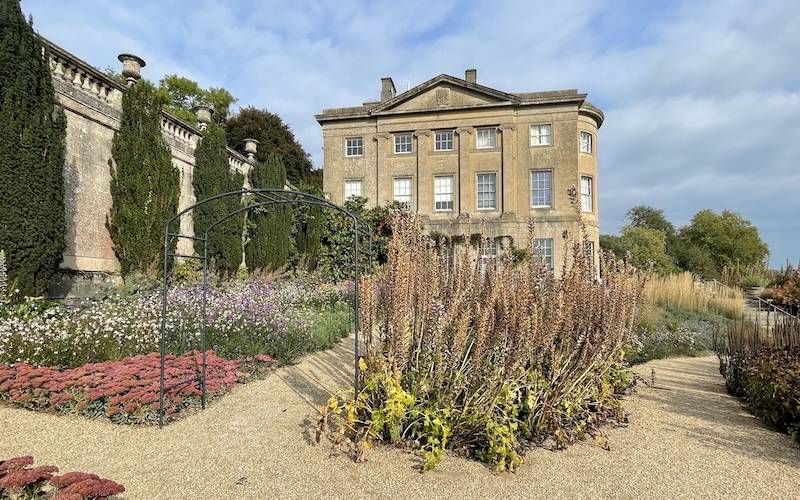

“The music grew clearer and lovelier all the time. She was beyond stopping herself. She crept around the bushes holding her breath. Standing on her toes, she could see most of the room, its richness and elegance set it apart from any room she had ever seen.
“Satin curtains framed the windows. The carpet was woven in a cabbage-rose design…Richly upholstered chairs and divans were scattered throughout the room.”
– Emmeline by Judith Rossner
Are you sitting down? If so, are you sitting on a chair? What kind of chair? I ask because it turns out that chairs have a lot to say—more than I ever realized before I visited the American Museum and Gardens in Bath.
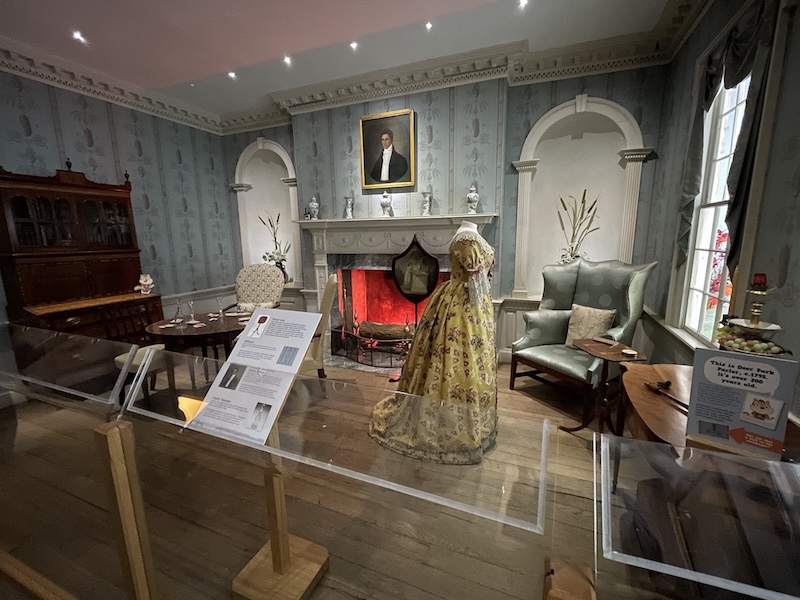
This is the sitting room of Deer Park House, a farmhouse near Pikesville, Maryland. Deer Park was built c.1750, but these furnishings come from the Federalist period of decoration in the late 1700s. Note the lush high-back armchair covered in imported French silk. This room is similar to the one described by Emmeline.
I was drawn to the American Museum because I’d heard they had one of the largest collections of quilts in Britain and exceptional gardens. On these two points, they didn’t disappoint.
But what I didn’t realize was that inside the palatial Georgian manor the museum’s creators had secreted entire rooms from American houses that were slated for demolition or sold off in pieces in the 1950s.
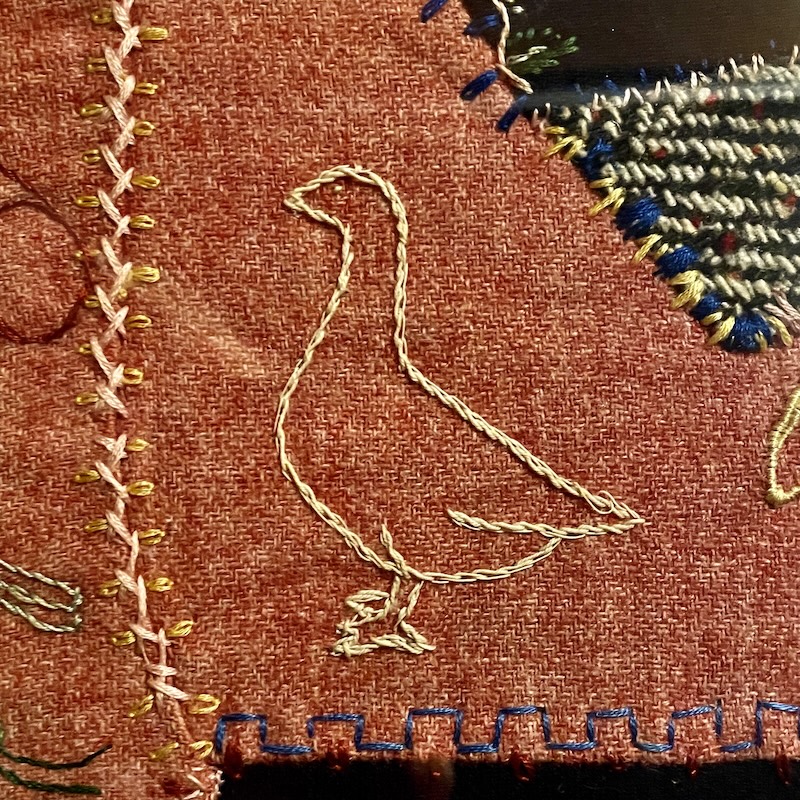
Crazy Patchwork Door Curtain. Marie Holm and her husband ran a traveling menagerie that toured the Midwest during the 1930s. Embroidered woolen curtain, Marie Hansen Holm, c. 1940, Minnesota.
The American Museum and Gardens was founded by Dr. Dallas Pratt and John Judkyn, partners who exported antiques from England to the United States via the nearby Bristol port.
When their ship left New York headed back to England, it wasn’t empty. It was full of American history. In 1958, Pratt and Judkyn bought Claverton Manor near Bath to create a lasting record of American dwellings and objects, in England.
Enter a series of rooms literally lifted from American soil and rebuilt inside Claverton Manor. Here’s the 17th century room. The panelling, corner cupboard, and floorboards are from a house in Wrentham, Massachusetts.
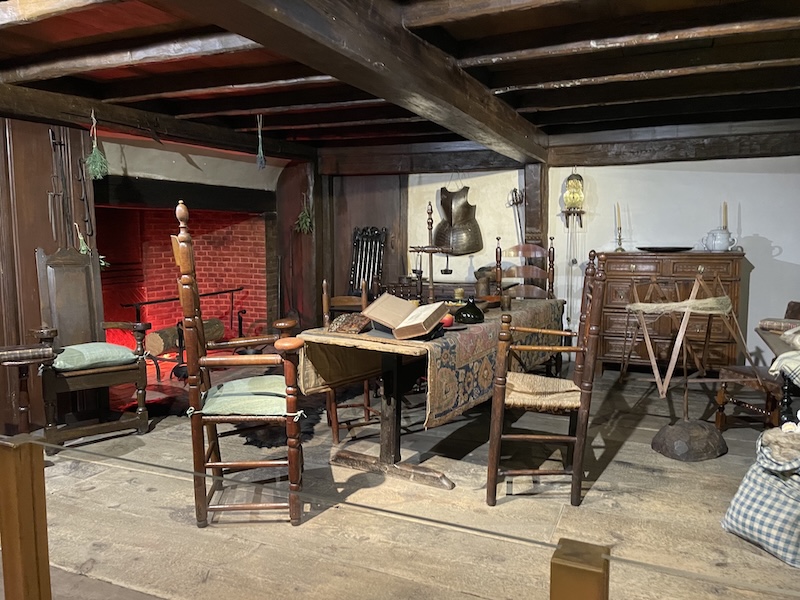
Let’s get down to the granular detail of this room. Notice that the rug is on the table not the floor. The rug was the most valuable thing this emigrating family owned. Too good for the floor. On the floor, they had a bearskin.
The bible at the end of the table with their family lineage written in the front was likely the only “legal” evidence of their existence. This was their birth certificate and passport rolled into one.
Why is there armor on the wall? Each colonist had to show that he could defend himself if the ship carrying himself and his family from England was threatened by pirates. The armor was largely symbolic on the ship, but in the new world, it would be hammered into cooking and farming implements because it was the only bit of metal they would have.
And what about that swift and the sack of fiber to the right? That’s linen, not wool. The English Wool Act of 1698 meant that American colonists couldn’t export wool back to England. So growing and processing flax was a show of resistance to this restrictive law.
Let’s look at the family’s luggage. Here it is: a chest. The Bible box on top of it, the armor, and the rug would have gone into the chest along with anything else they might have needed in the new world.
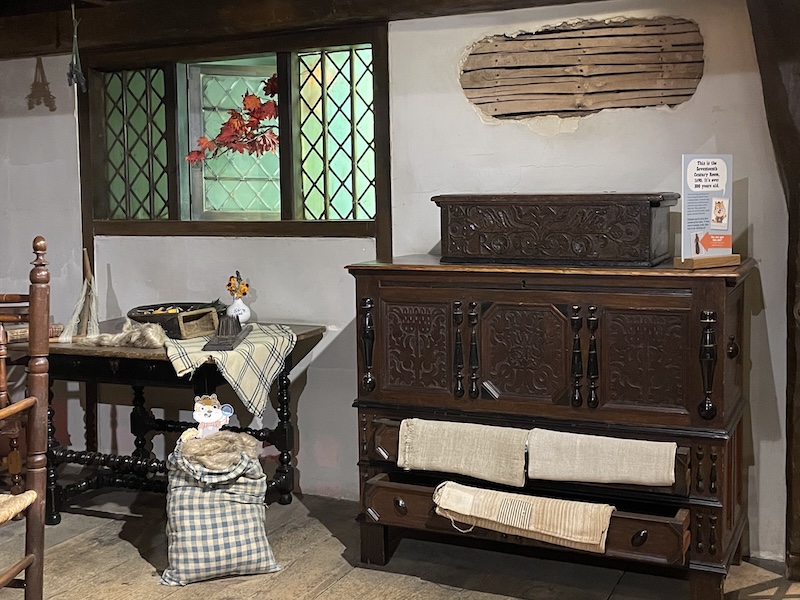
Now, let’s get back to chairs. Do you notice anything about the seats of the chairs in the 17th century room? One of them has a rush bottom and two have simple cushions.
As the docent for the textile tour led us through each room, she always pointed out the chairs and the rugs as rooms and time passed and fortunes changed. Now there were cushions on every chair. Now the rug was on the floor. Now the cushion was built into the chair seat. The rug was softer and larger. Now, the entire chair was upholstered with imported French silk and the rug was silk tied at twenty knots per inch.
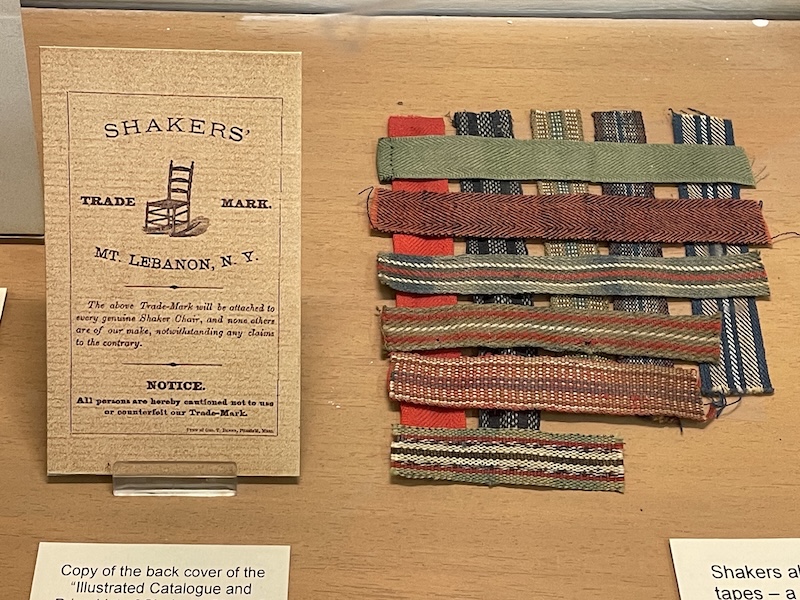
These Shaker chair tapes would have been easy to miss, but they are exquisite in their woven simplicity.
The wall coverings changed, too, from wood panels, to milk paint, to stenciled patterns, to the ultimate wallpaper printed with the image of George Washington.
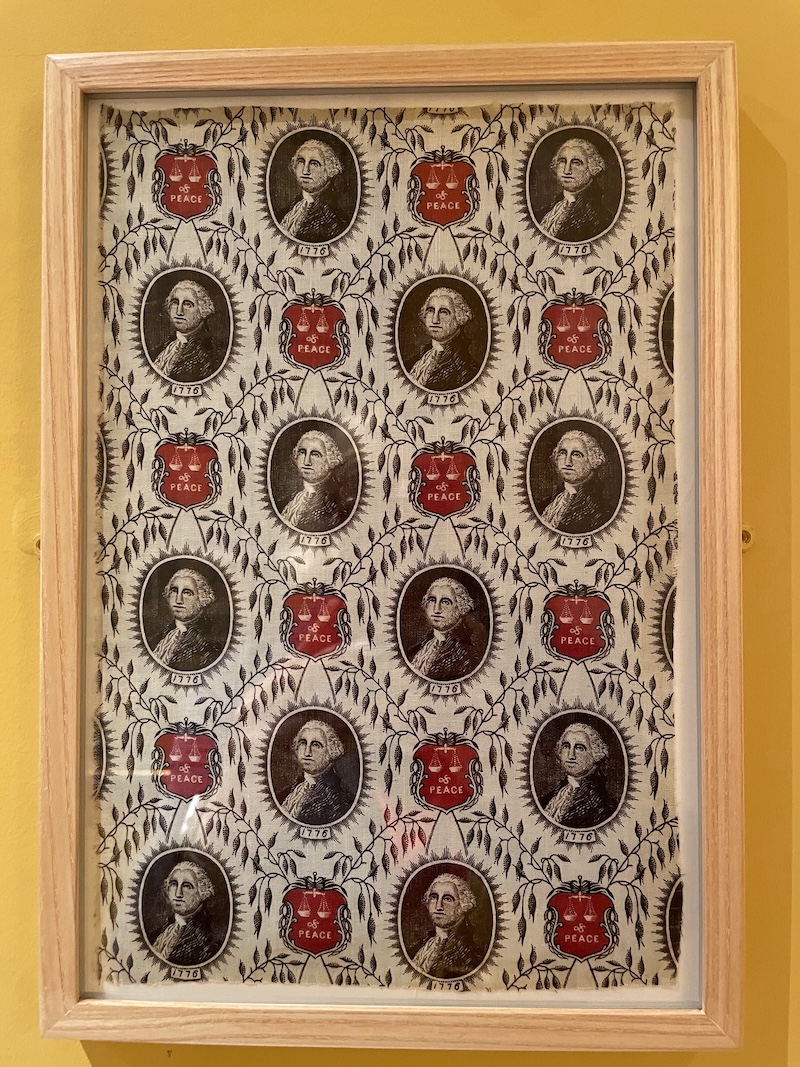
”Washington—Justice & Peace”, Wallpaper, 19th century. Made by the American Print Works, Fall River, MA.
Quilts also changed from homespun wool to whole-cloth quilts stuffed with rags to intricate pineapple log cabin patchwork quilts made entirely from imported silk.
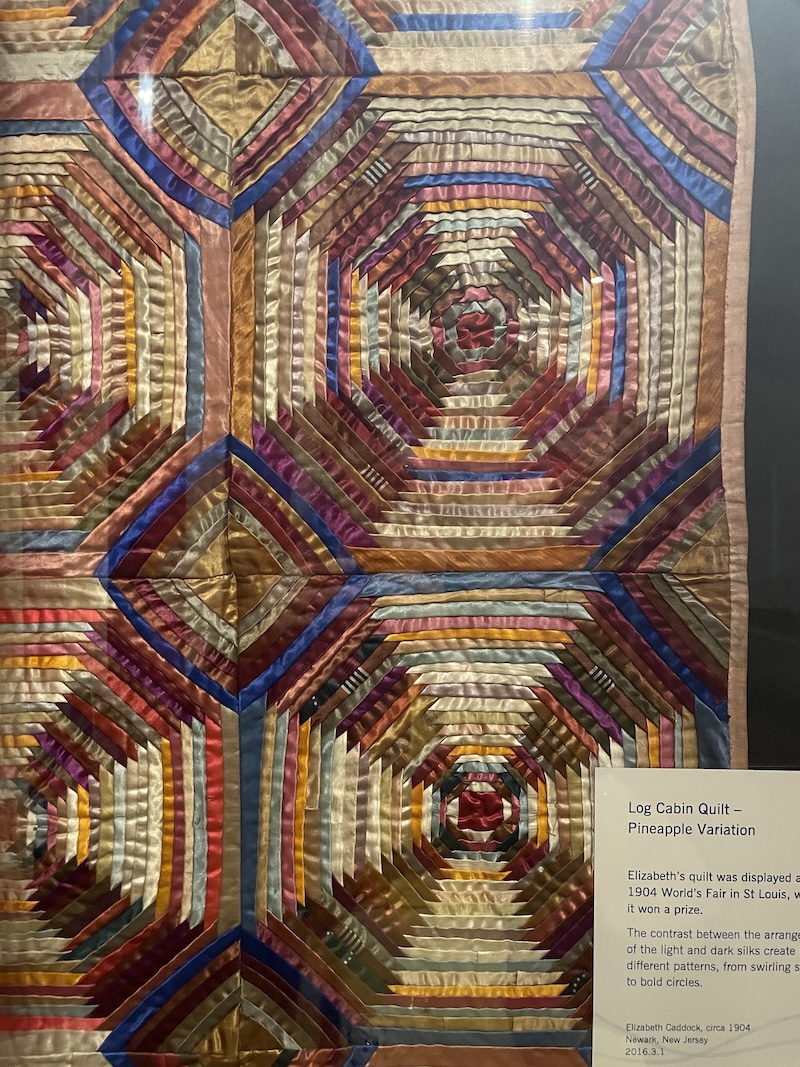
The Museum has a whole room dedicated to quilts with two carousels full of a rotating display of quilts. Log Cabin Pineapple Variation, Elizabeth Caddock, Silk, c. 1904, Newark, NJ.
Walking through these rooms and seeing how furnishings changed showed me just how lucky I am to be writing to you about it all now from a fully upholstered IKEA Strandmon wing chair in an indigo inspired fabric with no less than three pillows around me.
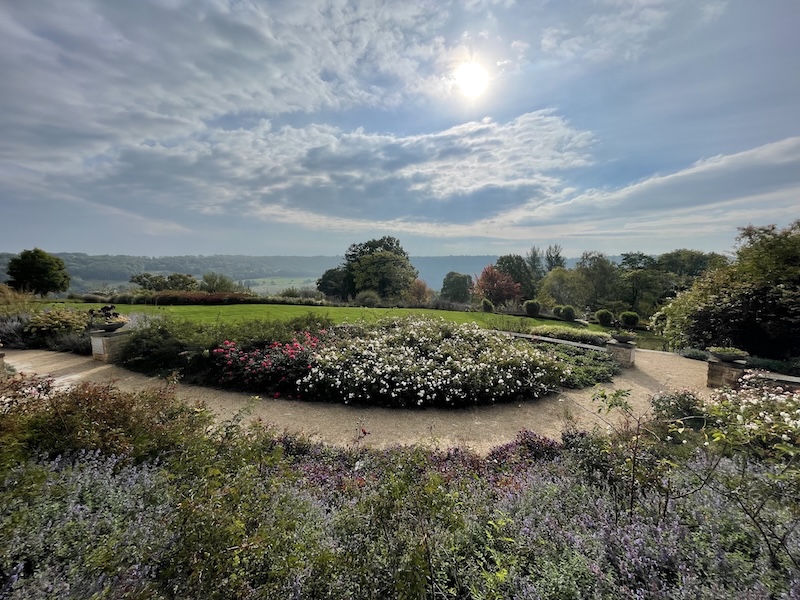
The American Museum and Gardens are located just outside the gorgeous city of Bath which, of course, has the famous Roman baths, but let’s face it, it’s also Jane Austen and Bridgerton central.
You can easily spend an entire day at the American Museum and still wish you had more time. For myself, I could have spent the whole day imagining the story of this little girl holding her little carved dog in one hand and scrunching up her pinafore in her other.
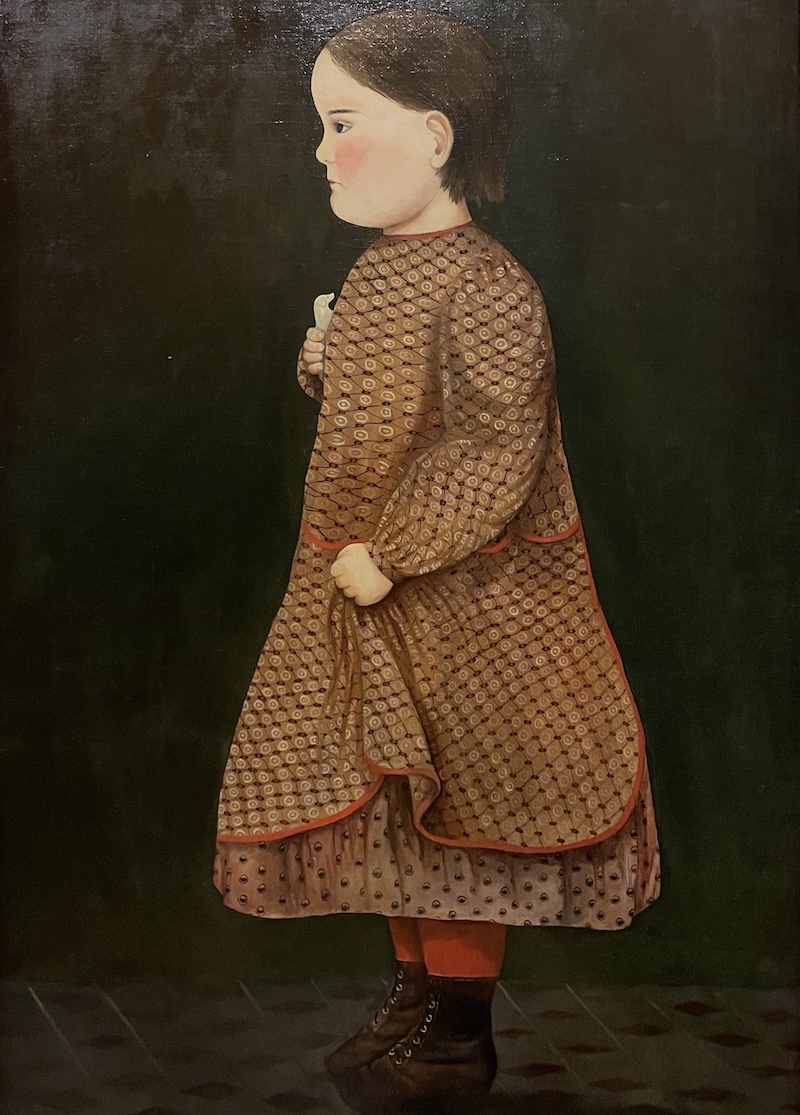
The name of the 18th century New England artist who painted this portrait is lost but he would have been one of many “limners”—itinerant painters.
The museum tour begins with Native American artifacts and model dwellings, then a room dedicated to religious artifacts from New Mexico, and carries on through fifteen period rooms to the late 1800s finishing with a folk art gallery, quilt gallery, and rotating special exhibitions.
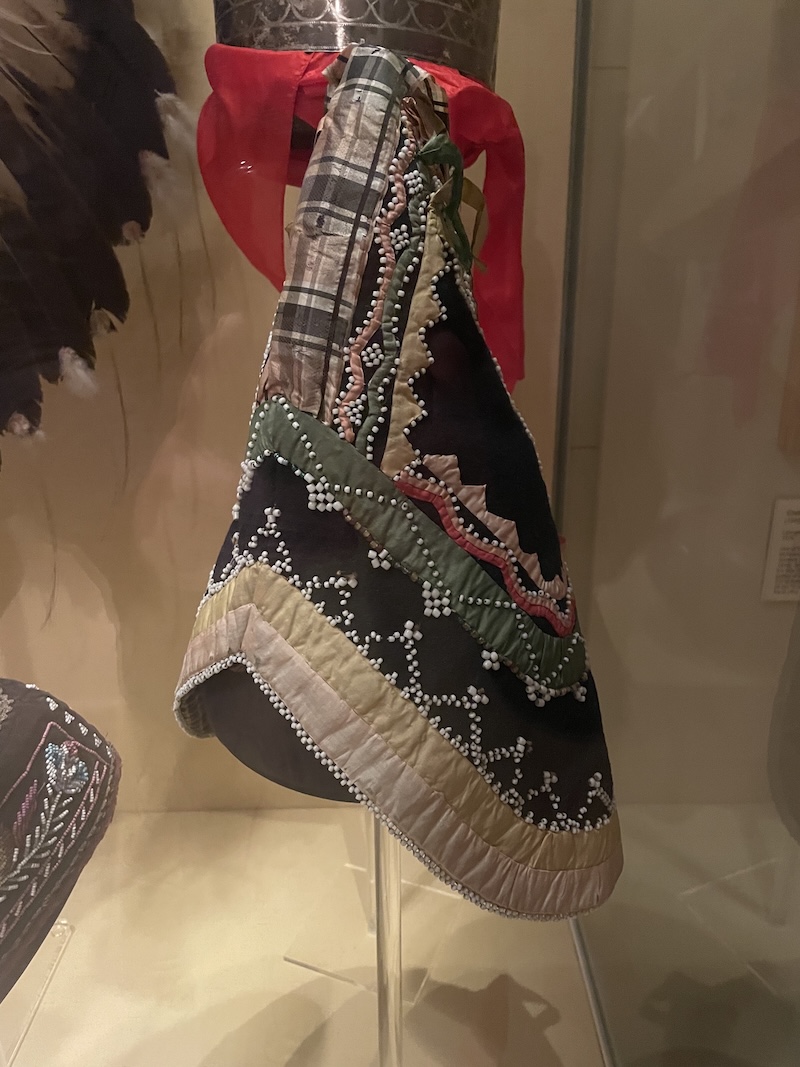
Made by women of the Penobscot tribe, Maine, 1840-60. Hood made of wool trade cloth, decorated with silk ribbons and colored beads from Europe.
There’s a cafe on site, a shop, and those unforgettable gardens. Highly recommended!
Live, Laugh, Log Cabin, LAST CHANCE
Ann and Kay have cooked up a Knit Stars class all about log cabin knitting, a way of knitting that can fill a lifetime with endless fun. Enrollment is open until midnight tonight, and the classes launch in November. Come see what the fuss is about!


Thankyou for this beautiful tour . What a gem this museum is,so many stories.
Oh this sounds wonderful!! Putting it on my “excursions” list for next time I’m in Bath! Thank you for sharing!
How did I miss this gem?!?
I must plan a trip back.
Very very interesting, thank you. I must visit.
Thank you Jeni!!
Very interestingly described: where history meets textiles. And that Pineapple quilt! A cross between Kay’s Courthouse Steps and a kaleidoscope. They must have had superlative eyesight in those days.
Thanks for this detailed tour, looks like a wonderful museum and definitely makes me want to see more!
What a joy and a treasure to go to a museum that reflects the everyday life of people in the Americas! I find it delicious to wander through museums of notable people who were not ultra rich, because the items they left behind were ones that were useful, and not just glamorous.
This was a wonderful tour. It was so fun to see the way chairs changed with time and wealth. As always, such a fun read.
I do enjoy all the museums you find to poke around in. I grateful have a place to share you observations with us.
Inspiration again! Thanks Jeni & MDK. Bath is officially on my travel hopes list!
Dutch genre paintings often display ‘rugs’ on tables. They were not placed on floors.
Odd to think that these collectors were taking American rooms and furnishings; while newly rich Americans in the late 19th and early 20th c. were taking French and English rooms back to their new mansions.
Not every historic site in the States has furnishings extant to the site, but many do; and there are many here to visit as well. They are often small historical sites and societies and appreciate local visitors and tourists. Small gems are often right outside one’s door, so to speak.
Thanks for leading us through this gem set in beautiful gardens. The progression of use and value of objects makes it so much more meaningful than just rooms of random objects. Enjoy reading about these not readily known places that you explore.
That’s the trip to heaven and
This was a wonderful beginning tour. Thanks so much!
Now Ann and Kay should study that Pineapple Log Cabin! Maybe they can come up with the next great knit technique!!
The Wool Act of 1698 and the tariffs of 2025!
Happy knitting to all! Or should I say Happy Fibering!
Thanks for the great photos and tour! Enjoyed it!
Oh, what a magical place! Thank you so much, Jeni, for taking us along.
I strongly suspect that the little girl clutching her dog in one hand and her petticoat in the other was NOT happy to be having her portrait painted that day. She and her dog had other plans, which the grownups rudely interrupted by making her Stand Still for Hours.
What a wonderful visit! Thanks!
I had no idea this museum existed! I have always been fascinated by the domestic history of people. How did they live? What did they do with their hands for fun and family? This article captures some of that story, and I learned some new things. Thank you.
Thank you so much for that most interesting piece about the Bath American museum. It must be almost fifteen years since I visited there and your article has made me put it into my diary for next Spring. I remember the later rooms but have no memory of the Native American rooms so I shall be very happy to see those.
This is incredible, thank you for the tour! I’ll be visiting in my-laws in England next summer, and now I’m thinking a trip to Bath will need to be added to the itinerary. (My in-laws are near Southampton, so Winchester, Salisbury/Stonehenge/Old Sarum, and the New Forest are already planned. My kids are old enough to appreciate it now, and I can’t wait to show them everything.)
It’s odd to think of Shaker goods in a museum overseas. It feels so specific and local to my area of the USA. I love going to Hancock Shaker Village in Massachusetts, a wonderful living history museum that is only half an hour from my NY Hudson Valley home.
What a treat of cross cultural pollination. I am floored by the forward thinking founders of this American-in-the-UK museum. What a jewel and I will start by the relatively small and last item of this article: the native made hood where the very “new”,“imported” materials were used in this confection. The question remains though: is the form of it a traditional native head covering, not familiar to me or maybe a native American’s rendition of a stand-alone hat (minus the cape it probably would have had) of the newcomers… One thing is a sure bet – a visit to this museum is no less enlightening than any grand other museums in the old country of UK.
What a lovely museum! Thank you so much for the insightful virtual tour. So many treasures. I would love to know why the Americans sold up their homes to the Englishmen…